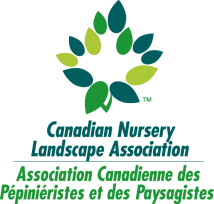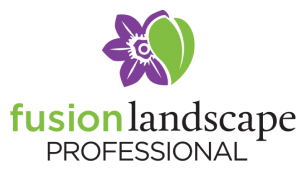Designing a pollinator garden is a rewarding way to enhance biodiversity in your yard while creating a vibrant and lively space. Pollinators, such as bees, butterflies, and birds, play a crucial role in pollinating plants, which supports the growth of fruits, vegetables, and flowers. By designing a garden specifically to attract these important creatures, you’ll not only improve your garden’s health but also contribute to the well-being of local ecosystems. In this post, we’ll explore how to design a beautiful and functional pollinator garden that attracts bees, butterflies, and birds.
Why Create a Pollinator Garden?
Pollinator populations are declining due to habitat loss, pesticide use, and climate change. By creating a pollinator-friendly garden, you help support these essential species and improve the environment. The benefits of a pollinator garden include:
- Supporting Local Ecosystems: Pollinators like bees and butterflies help fertilize plants, allowing them to produce seeds and fruit. A healthy pollinator population is crucial for the survival of many plants and food crops.
- Promoting Biodiversity: A well-planned pollinator garden attracts a variety of species, enriching the local biodiversity and supporting a healthy, balanced ecosystem.
- Enhancing Beauty: Pollinator gardens are naturally colorful and filled with movement, as pollinators flit between flowers. The variety of plants and animals can make your garden more vibrant and dynamic.
- Reducing the Need for Pesticides: By attracting beneficial insects and birds, you can help naturally control pests in your garden, reducing the need for harmful chemical pesticides.
Key Principles for Designing a Pollinator Garden
To create a pollinator garden that attracts bees, butterflies, and birds, consider the following key principles:
- Plant a Variety of Nectar and Pollen-Rich Plants
- Pollinators are drawn to plants that offer abundant nectar and pollen. By selecting a mix of flowering plants with different bloom times, you’ll ensure that your garden provides food for pollinators throughout the growing season.
- Native Plants: Native plants are particularly beneficial for local pollinators, as they are adapted to the local climate and provide the best nutrition. Some excellent native plant choices for a pollinator garden in Ontario include:
- Purple Coneflower (Echinacea purpurea): A favorite of bees and butterflies.
- Black-eyed Susan (Rudbeckia hirta): Provides abundant nectar and attracts pollinators.
- Bee Balm (Monarda didyma): Known for its bright flowers and ability to attract hummingbirds, bees, and butterflies.
- Milkweed (Asclepias Syriaca): Essential for monarch butterflies, as it serves as a host plant for their larvae.
Garden design & planting professionals can help you choose the best plants based on your local climate and the types of pollinators you want to attract.
- Provide a Range of Plant Types and Habitats
- Different pollinators are attracted to different types of plants, so it’s important to diversify your garden. Plant a mix of flowers, shrubs, trees, and grasses to appeal to a variety of pollinators.
- Flowering Shrubs and Trees: In addition to herbaceous plants, include flowering shrubs and trees like dogwoods, crabapples, and serviceberries, which provide both nectar and shelter for pollinators.
- Grasses and Ground Covers: Ground covers like clover and thyme can provide low-maintenance greenery while supporting ground-dwelling pollinators like ants and beetles.
- Herbs: Planting herbs such as lavender, mint, and oregano can attract bees and butterflies, while also providing you with fresh ingredients for cooking.
- Create Habitat and Shelter
- Pollinators need more than just food—they also need shelter to rest, breed, and raise their young.
- Bee Houses: Solitary bees, like mason bees, need places to nest. Create or purchase a bee house to provide nesting sites for these valuable pollinators.
- Butterfly Puddling Areas: Butterflies often gather on moist soil to drink minerals. Create a small puddling station by placing a shallow dish of water with sand or mud, allowing butterflies to land and sip.
- Birdhouses and Nesting Sites: For birds, provide nesting boxes and shelter by planting shrubs and trees where they can find safe places to rest and build nests.
- Ensure a Continuous Bloom Cycle
- To provide a steady food source for pollinators, choose plants that bloom at different times throughout the year. This ensures that there’s always something in bloom, from early spring to late fall.
- For example:
- Spring: Crocuses, red-twig dogwood, and spring beauty are excellent early blooms.
- Summer: Lavender, black-eyed Susan, and sunflowers attract a variety of pollinators.
- Fall: Goldenrod, asters, and sedums offer late-season nectar for pollinators before the cold sets in.
- Limit Pesticide Use
- Pesticides, particularly neonicotinoids, can be harmful to pollinators. Instead of using chemical pesticides, consider organic pest control methods such as introducing ladybugs, lacewings, or other beneficial insects that prey on garden pests.
- If you must use pesticides, apply them in the evening when pollinators are less active, and opt for natural, non-toxic alternatives.
- Add Water Sources
- Pollinators need water to drink and bathe. A small birdbath, shallow dish, or fountain will provide a water source for bees, butterflies, and birds.
- Ensure that the water source is shallow, as pollinators can easily drown in deep water. You can also add small stones or twigs for bees to land on safely.
- Use Natural Mulch and Ground Cover
- Use organic mulch like straw or leaves in your garden beds to retain moisture, regulate soil temperature, and suppress weeds. Mulch also provides a habitat for pollinators like ground beetles, which help control pests in your garden.
- Avoid using synthetic mulch, which can be harmful to the environment.
Designing a Pollinator Garden with Features
When designing your pollinator garden, think about how different elements can work together to create an inviting space for pollinators. Here are some design ideas:
- Wildflower Meadow: Instead of a traditional lawn, create a wildflower meadow with native plants that will attract pollinators. This low-maintenance option offers a natural habitat for bees, butterflies, and birds.
- Butterfly Garden: Dedicate a section of your garden to butterfly-friendly plants such as milkweed, bee balm, and asters. Include a small water feature and plenty of nectar-rich plants.
- Pollinator Pathways: Create a pollinator pathway by planting nectar-rich flowers along a garden path or walkway. This will provide an inviting space for bees and butterflies as they move through your garden.
For personalized guidance on designing your pollinator garden, landscaping consultation services can help you choose the best plants and layout for your specific space and goals.
Conclusion
Designing a pollinator garden is a great way to support local wildlife while enhancing the beauty and functionality of your outdoor space. By selecting the right plants, providing habitat and shelter, and minimizing pesticide use, you can create a vibrant and thriving garden that attracts bees, butterflies, and birds. Whether you have a small urban courtyard or a larger backyard, a well-planned pollinator garden will bring year-round joy and contribute to the health of local ecosystems.





